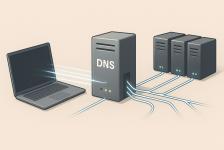Google has partnered with Kairos Power and plans to power its data centers with small modular reactors. The aim is to secure 500 MW of zero-emission energy by 2030. The ambitious plan faces both technical and societal challenges.

In a time when the energy demands of data centers and artificial intelligence are rapidly increasing, technology giants are seeking alternative energy sources. Google has taken a bold step by partnering with the startup Kairos Power to build seven small modular reactors to power its data centers. This step promises to add approximately 500 megawatts of zero-emission electricity to the grid.
Nuclear energy: A new hope for data centers?
Google's collaboration with Kairos Power is not unique. Other tech companies like Microsoft and Amazon are also turning to nuclear energy. Microsoft has partnered with Constellation Energy to restart a reactor at Three Mile Island.
Conversely, Amazon plans to establish a hyperscale data center directly connected to a nuclear power plant in Pennsylvania. Thus, nuclear energy is increasingly being seen as a reliable and zero-emission source for energy-intensive data centers.
Challenges and obstacles on the path to a nuclear future
Kairos Power is among the new generation of startups focused on small modular reactors (SMRs). These reactors promise lower costs and quicker construction compared to traditional nuclear power plants.
Kairos takes it a step further by using molten salts of lithium fluoride and beryllium as coolant instead of water. While the innovative approach has received approval from regulatory bodies, it also represents a technological challenge.
Google aims to complete construction by 2030
The economic aspect of SMRs has not yet been proven in practice, and the use of molten salts deviates from decades of experience with water-cooled reactors. Public opinion also poses a significant hurdle.
Although support for nuclear energy is growing, there is still a significant portion of the population opposed to its use. Google expects the new plants to be operational by the end of the decade. Kairos Power originally planned to commence commercial operation in the early 2030s, so the 2030 timeframe appears ambitious.
Furthermore, Kairos finds itself in a race with fusion startups that are also aiming to launch commercial plants by 2035. Whether Google and Kairos Power will be able to overcome these obstacles and realize their vision of nuclear-powered data centers remains to be seen.
What is DNS? Everything you need to know about its functionality and setup

When you type a website address into the browser, the correct page loads in an instant. This is managed by the DNS system, without which the internet as we know it would not exist at all. In this article, you will learn what DNS is, how it works, what types of records it contains, and why it is important for both speed and security of the connection.
How does fiber optic internet work and what do you need for its installation?

Fast and stable connection is a basic necessity in every household today. The solution is fiber optic internet, which works differently than regular cables and offers greater reliability to users. We'll explain how this technology works in practice, what it entails to run a fiber optic cable to your home, and what equipment you’ll need to keep everything running smoothly.
Cloud gaming – the end of consoles in sight?

Cloud gaming allows you to play games from anywhere without the need for expensive hardware. In this article, you'll learn how game streaming works, what advantages and limitations it brings, and which services are leading the way today. And most importantly: can it really threaten traditional consoles?
Chips under the skin and in the head. The future is closer than we think

Brain microchips already allow controlling a computer with mere thoughts. In the article, you will learn how they work, what they have brought to the first users, and what promises scientists and Elon Musk associate with them. Along with hopes, questions about safety, ethics, and where this technology might take us also arise.
What consumes the most data on mobile? YouTube, Spotify, Netflix and other apps under scrutiny

Mobile data usage can sometimes be unpleasantly surprising. The most are consumed by video streaming and music services – how much data does YouTube, Netflix or Spotify use? And what about other apps like social networks, maps or video calls? Check out the overview of the biggest data guzzlers and find out how to keep mobile data under control.
How to find out who is connected to your Wi-Fi – and can you easily disconnect them?

Is your internet slowing down or do you suspect that someone unauthorized is connected to your Wi-Fi? We advise you on how to find out who is connected to your Wi-Fi, and what to do if you find an intruder.